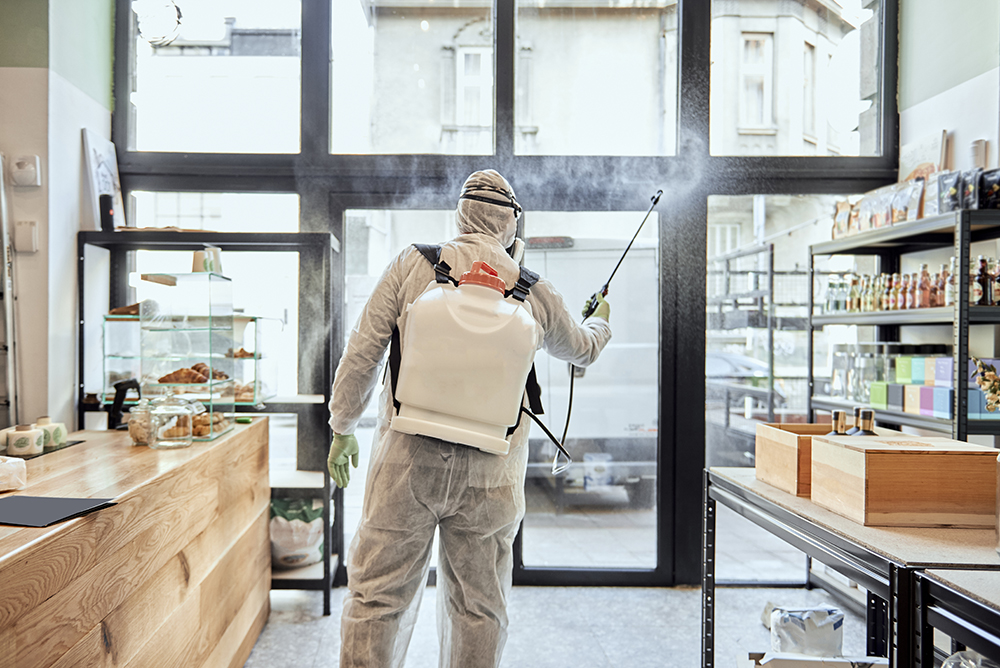Electrostatic spray technology is the most efficient system for disinfecting surfaces in facilities of any size, but it is especially valuable for use in large area environments because is saves time and effort, and it can disinfect places that are difficult to reach when using other methods.
Electrostatic spraying allows increased control over where the spray lands, which also means less waste. The even layer of spray disinfects and dries without needing to be wiped off, which means your commercial cleaning team can disinfect surfaces without ever having to touch them.
Electrostatic disinfection uses a specialized aerosol sprayer with an electrode inside the nozzle that gives the disinfecting solution an electric charge. When the positively charged disinfectant is sprayed, it is attracted to surfaces by means of electrostatic force. This method allows the disinfectant to cover its target evenly and thoroughly, on even hard to reach surfaces, and causes it to bond to the surface for longer-lasting protection.
Electrostatic spray technology has been used for decades to paint motor vehicles and aircraft because of its ability to create thorough and even coverage that can reach even the toughest places. Electrostatic disinfection is ideal for a variety of commercial facilities because it provides wide, complete coverage over large surface areas in less time than other methods, saving facility managers time and money while at the same time achieving better results.
As effective as electrostatic disinfection is, however, it’s only as useful as the disinfectant product used. If you want to protect your facility, it’s important to use a disinfectant that is Health Canada approved and safe for operators and others present in the area while spraying. Personal protective equipment is often necessary and product instructions may state that re-occupancy can happen immediately after application if air concentrations are below acceptable levels.1 The disinfectant should also be safe for use on a wide range of both porous and non-porous surfaces.
With electrostatic spraying, the disinfectant solution is ionically charged and reaches its target with little or no waste, so less disinfectant product is used. With ordinary spraying, disinfectant is wasted because the spray drifts from the targeted area and settles in unintended places. A study by the US Environmental Protection Agency evaluated the effectiveness of electrostatic sprayers in decontaminating PPE for first responders. The results showed that electrostatic disinfection produced 75 times less waste (from runoff post-aerosolization) than backpack sprayers.1
According to manufacturers of electrostatic sprayers, the disinfectant product does not stay in the air as long as it does with fogging spray systems because the electrostatic charge causes the disinfectant droplets to adhere to surfaces more quickly instead of remaining airborne.1
Electrostatic spray technology is especially valuable for use in large area environments, but it is the most efficient system for disinfecting high-touch surfaces and high-traffic areas in business and organizations of any scale.
Sources:
